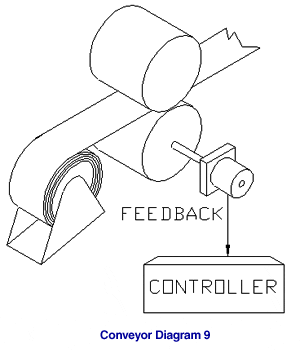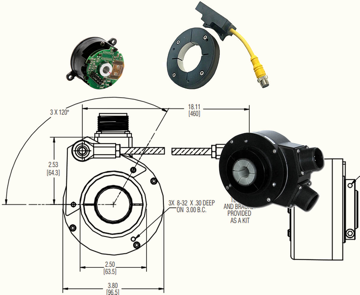Typical Encoder Applications
Motor Speed / RPM Readout is the most common way that encoders are used. In this type of application, the encoder is mounted either directly to the end-bell of a motor via a shaft moving in exact proportion of the motor shaft, or indirectly using a measuring wheel or chain-and-sprocket arrangement. The critical parameter of measurement is motor speed whereby the encoder module (ring) provides feedback to a drive, so that the drive can verify that the speed and direction is correct. This team effort between the drive and the encoder ensures that whatever the motor is driving runs safely and smoothly and does not run out of control or erratically in applications where precise speed is a requirement.
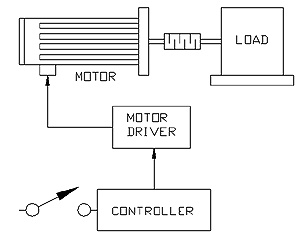
Web Speed / Tension Control is an application in which an encoder is mounted to a motor as well as a tension roller. Any unevenness in the rotating speed of the tension roller is fed to a controller which sends a signal to the drive motor to adjust in order to maintain an even tension proportion between the web roller and drive motor. Maintaining optimal web tensioning is critical in assembly and conveyor applications or in roll tensioning applications designed to prevent tearing, backlash or other potential injury to machine operators
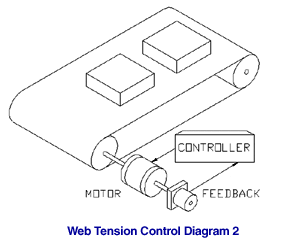
Linear Measurement / Cut-to-Length is a form of linear measurement whereby an encoder is mounted on a lead screw or measuring wheel to prevent a user from having to physically measure (using a tape measure or inaccurate hand mark or eye estimate) a length of material before it is cut. Since an encoder delivers a fix number of pulses in a revolution, a device can be scaled to increment at a designated length per pulse. This device may be a preset counter or PLC that in turn has a relay output that can be set to fire when the desired length is met to ensure a precise and accurate cut every time.
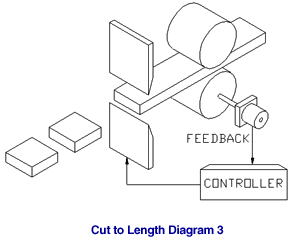
Position Measurement / Pulse Marker or Registration Mark Timing are forms of position measurement and display that use encoders to determine the position of a device relative to a set or known marker. The encoder in this application is used to earmark a point in the rotation speed of a shaft on a device in relation to a set point to determine the device’s speed relative to that mark. Radar antenna, robotic arms or satellite dish rotation are good examples of this type of registration mark application.
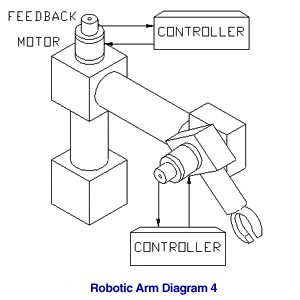
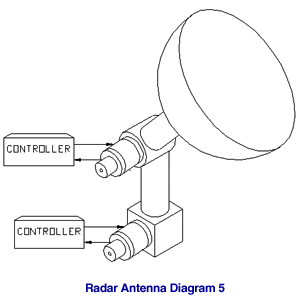
Position Measurement / Backstop Gauging this position measurement application is similar to a cut to length application whereby the encoder is used to make sure that the unit, typically a machine tool, does not exceed a preset position or direction of travel. Very often, this is combined with a determination of the speed of travel of the table, tool head, or similar component to ensure that the machine does not over travel. Though limit switches can be used in backstop applications, encoders are more shock resistant and tend to last longer.
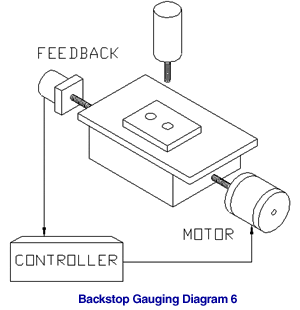
Position Measurement / Filling Applications is an application where the encoder is used to feedback the position of the rotation of a tube or position of a table so that the item to be filled is in the correct position before the filling tube or fluid valve is activated.
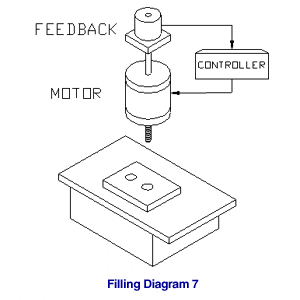
Position Measurement / Conveying is another common industry application where encoders are widely used to monitor and control conveyor speed. Similar to a motor feedback application, encoders are attached to a motor, to intermediate axle shafts, or to both. The critical parameter of measurement is motor speed whereby the encoder module (ring) provides feedback to a drive, so that the drive can verify that the speed and direction is correct. This team effort between the drive and the encoder ensures that whatever the motor is driving, runs safely and smoothly, and does not run out of control or erratically in applications where precise speed is a requirement, like that of a conveyor system.
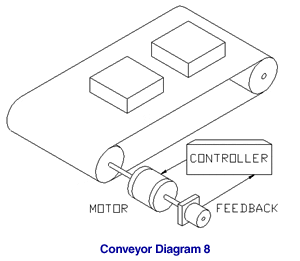
Position Measurement / Spooling is another application where encoders are advantageous. The encoder is mounted to the shaft of a spool, and the connected controller keeps track of the length and speed of the take up material being spooled based on feedback from the encoder.
